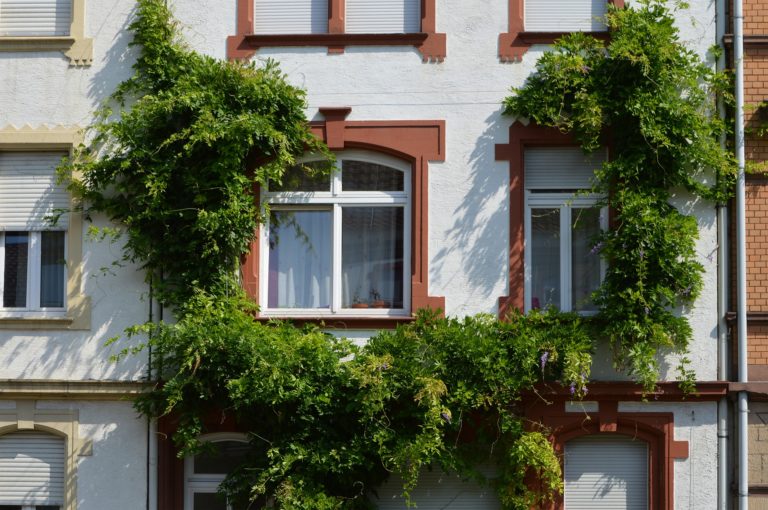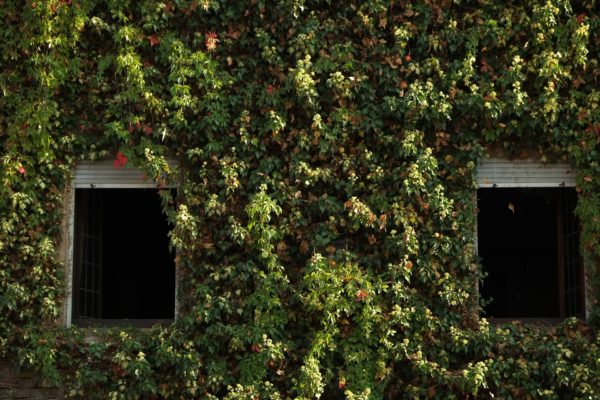

What else could complement your home’s walls better than ivy? Well, there are only a few. The hedera plant, commonly known as ivy, is ideal to give your home and yourself a gentle touch of nature. However, while the ivy plant looks unusually beautiful on a wall, it demands maintenance, quite a lot of it. Also, ivy roots are robust which allows them to cling to walls long after the ivy plant dies.
They can create or widen cracks in walls which may pose a threat to your home’s durability in the long run. Furthermore, insects and other pests can also find shelter in dead ivy.
As you might’ve guessed by now, the plant, if left unmaintained, can damage the look of your home or leave nasty marks, either of which is not the outcome you would want from your ivy plant. In that case, if it’s too late for you to take any precautions and your walls are already stuffed with ivy tendrils, follow this article to learn how to effortlessly remove them.
Removing Ivy Tendrils
First up, do know that there is no magic formula to remove these nasty tendrils and their marks from the wall. You would have to be patient if you don’t want the mortal to come out with the tendrils. Let’s look at the steps and tips that you should follow to remove ivy tendrils from the walls:
- Soften the Tendrils
Begin by soaking the ivy that has been left on the wall with a chemical that will soften it, a detergent solution with appropriate ratios can do the trick. After around 30 minutes of soaking, clean and remove the remaining ivy tendrils. You may have to blow clear the ivy tendrils to eradicate them. But be cautious as the surface is hard enough to handle the clean in case of a brick wall, you can easily pressure wash ivy off brick. For painted walls, things are a bit different.
- Be Gentle
Pull the ivy from the wall lightly, not caring about the stems that may break and stay trapped. If the stems do get trapped inside the cracks, there’s nothing you can do about it, that is if you don’t want the situation to get even messier. If you try to do it aggressively, in most cases, the stems will damage the mortar if yanked too hard.

- Scrape Carefully
Begin by scraping any remaining complete roots and stems away using a wooden or plastic scraper. Again, be gentle with the process and make sure not to harm the mortar.
- Scrub
Once you’re done with the tiny and not-so-stubborn tendrils, it’s time to use the scrub brush. You can start by using a nylon household scrubber or any other reliable scrubber you see fit for the job. If there are any lingering tendrils, use water and a light detergent to release them. If a regular scrub brush isn’t cutting it, try a stiffer brush or a scrubbing sponge. Make sure to take it gently with the brush since the stiffer it is, the more likely you are to damage your wall or the mortar.
- Use a Propane Torch (for brick walls only)
Torching the tendrils with a propane torch comes in handy for stubborn roots and stems that make their way deep into the mortar. Try burning away the remaining tendrils with a propane torch. Take note that this method can also scorch your brick, making the situation even worse.
So, make sure you test the torch beforehand. Keep the flame away from wood or other flammable things and wear goggles. Needless to say, don’t try the method on wooden surfaces, stick to the alternative methods like scraping and scrubbing in such cases.
Removing Ivy Stains
Ivy stains are caused when your ivy dies naturally and you don’t clean up the places right away. In that case, the residual vine oxidizes, colouring the brick or surface beneath them long after all organic material has been removed. If spotted early enough, these stains can be removed with a stiff-bristled brush and a solution of laundry detergent and water. If your walls require additional attention, consider attaching a brush attachment to your drill and scrubbing out dead tendrils and stains, and prevent stains from occurring in the first place.
Also Read: Problems with Rendered Walls
How to Kill Ivy Permanently?
Combining physical removal procedures such as scraping and scrubbing with herbicides is the most successful strategy to remove ivy. Glyphosate is one of the most effective pesticides for killing English ivy. Spray the area where you want to kill the ivy and you’re done. However, make sure the glyphosate doesn’t reach any plants you want to keep. Alternatively, you can create an ivy-killing chemical at home with daily use products like salt and detergent.

Just add three pounds of salt and 1/4 cup of liquid soap in one gallon of water, pour the mixture into a spray bottle or garden sprayer. Take note that even if you use this procedure, the poison ivy will retain its skin-irritating oils, so make sure to wear gloves while doing the job.
Conclusion
Removing ivy tendrils is a task one should let the experts handle. It often involves chemicals mishandling which may cause serious issues. However, if you don’t want anyone’s help, the tips we’ve shared will surely come in handy. After all, the cost of poison ivy removal can range from $300 to $700, depending on the amount of poison ivy that needs to be removed from the region, that is if you call for assistance. So, while growing ivy on your walls may not be a bad idea to enhance the look of your building, maintaining the plant can often be a pain.
If you think you can’t maintain the plant further, it would be best to cut off the ivy vines at their base and allow them to die naturally. The vines will dry out and naturally fall away from the house for a season or two, minimizing any potential damage caused by their removal.





